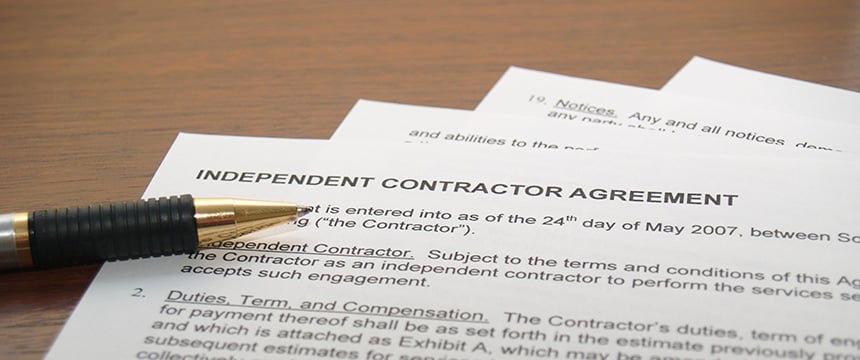Child Labor: 9 Key Strategies to Mitigate Risk of Child Labor in the Supply Chain

Since 2018, the U.S. Department of Labor has seen a 69% increase of children being employed illegally by companies. Last month, the U.S. Department of Labor (DOL) and Department of Health and Human Services (DHHS) announced their increased focus on identifying, stopping, and preventing child labor exploitation throughout the United States. The agenda includes several new initiatives to investigate child labor violations, and the DOL identified one of the key efforts will be to “Hold All Employers Accountable” to ensure child labor is removed from supply chains. The initiative is particularly relevant to the manufacturing industry where children may be working overnight shifts and/or using dangerous machinery. On March 24, 2023, the DOL and DHHS announced a Memorandum of Agreement that formalized the partnership between the agencies and set forth the specific procedures the agencies will follow in pursuit of this initiative. The DOL is also calling on Congress to increase the civil monetary penalties for child labor violations, currently $15,138 per child.
Red Flags For Which Manufactures Should Look
In light of the above directives — and to take appropriate corporate responsibility — manufactures should be familiar with the below red flags that increase the risk of child labor in the supply chain.
- Temporary Agencies – While the use of temporary agencies may be unavoidable, particularly given the labor shortage around the country, using temporary agencies increases the risk of child labor occurring. Typically a temporary agency is responsible for interviewing candidates and verifying their age and ability to work in the U.S. This can significantly limit your company’s visibility into the thoroughness and accuracy of the age verification process and whether any minors are being staffed in your workforce.
- Not Vetting Vendors/Contractors – Many manufacturing companies require the use of vendors and contractors, including for uniform services or canteen, facility, and/or grounds maintenance. It is easy to assume that your business is not using child labor if you have a strong policy as well as protocols to prevent it, but failing to thoroughly vet your company’s contractors and vendors can create an increased risk that minors will enter and work in your facility. This is particularly important if the contractor is supplying workers for a more substantive role, such as parts/product checking or sorting, which could expose any minor workers to the dangerous conditions often present in a traditional manufacturing environment.
- Uncontrolled Access Points – Failing to properly limit worker access to your facility can increase the likelihood that minors are entering the facility undetected. For example, a minor child could be using an access badge for an adult family member and performing work under the family member’s identity if the access badge does not include photo identification and/or management is not checking the badge when the individual enters the facility.
Best Practices to Avoid Inadvertent Use of Child Labor
- Minimize Use of Temporary Agencies – Limit use of temporary agencies to the greatest extent possible. If you must use temporary staffing agencies, then make sure the contract with the agency includes a provision that the agency will verify every employee’s age using photo identification, maintain a thorough record of their ages, and disclose the same if your business suspects child labor or needs to conduct an audit.
- Thoroughly Vet Vendors and Contractors – Research the past practices of any vendors and contractors you are considering partnering with and avoid using any vendors or contractors that have historically engaged child labor. Require that all contracts include detailed disclosure requirements, such as the vendor/contractor has no right to subcontract without authorization and validation by your company’s leadership team. Also include a strong indemnification provision in the event child labor occurs.
- Control Facility Access – Prevent employees, contractors, and vendors from having multiple points of entry into your facility, which increases the risk of minors entering the facility by using false identification or no identification. Direct and require all vendors and contractors to enter through the facility’s main lobby/entry and present photo identification before allowing them access to any other area of the facility, and keep a log of the same. If you suspect a minor is amongst your direct workforce, require all employees to present photo identification each time they arrive to work and verify their age before each shift until your company is confident child labor is not occurring.
- Perform Regular Audits – Perform comprehensive audits at reasonable intervals regarding the age of all employees, as well as reviewing the contract terms and relationship with all vendors and contractors and identifying any points of weakness in employment policies and facility access. Then take prompt action to remedy any issues.
- Promote a Strong Reporting Culture – Promote a top down reporting culture that emphasizes to all members of your workforce if you “see something wrong, say something”. This includes publishing a policy prohibiting child labor, specifying reporting mechanisms, and conducting regular trainings regarding this issue.
- Display Required Posters – Display required State and Federal Child Labor Law posters in easily viewable areas of your facility. If your facility has a high population of non-English speaking workers, make sure to also post translations for the languages primarily represented by your workforce.
